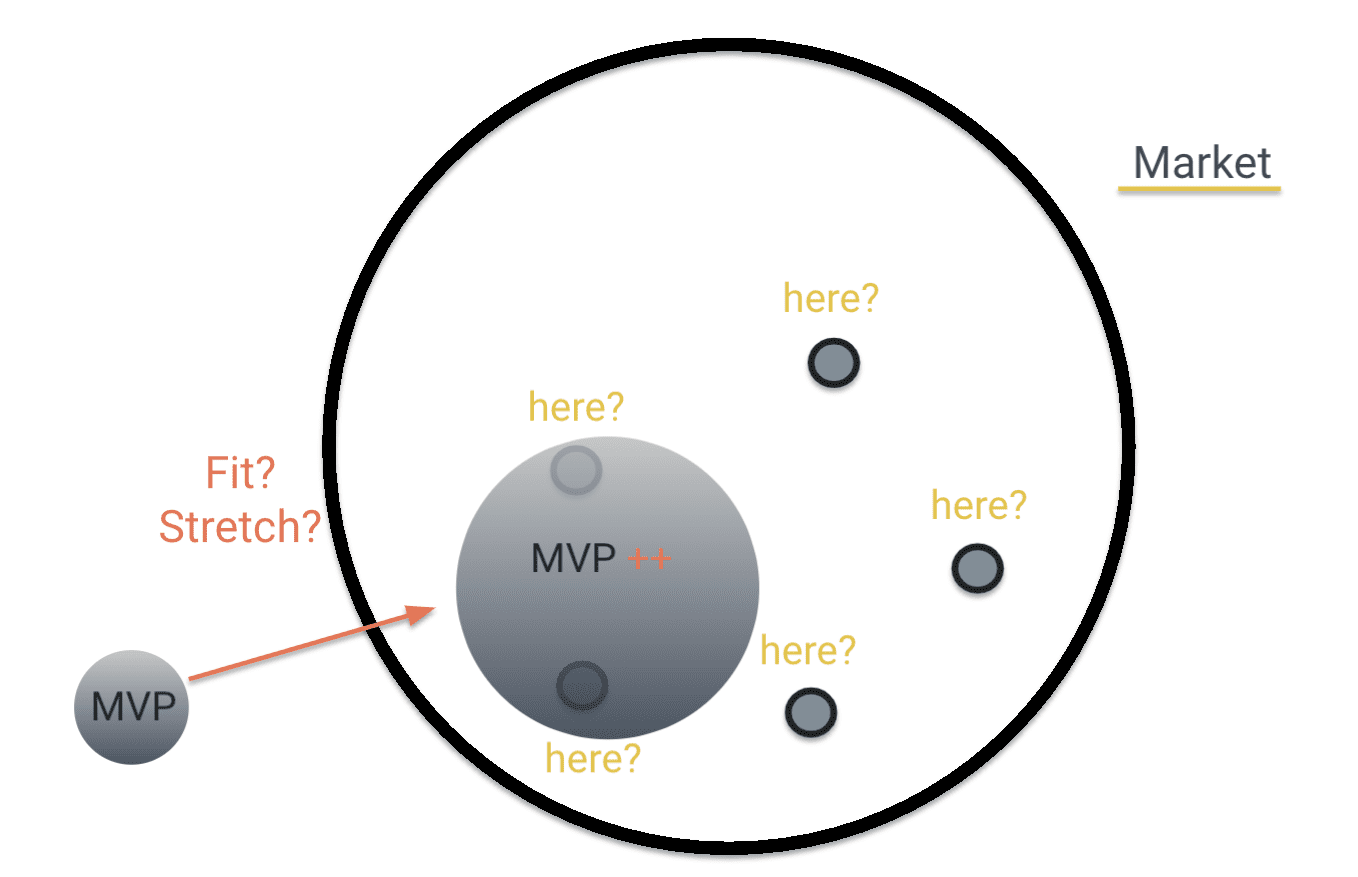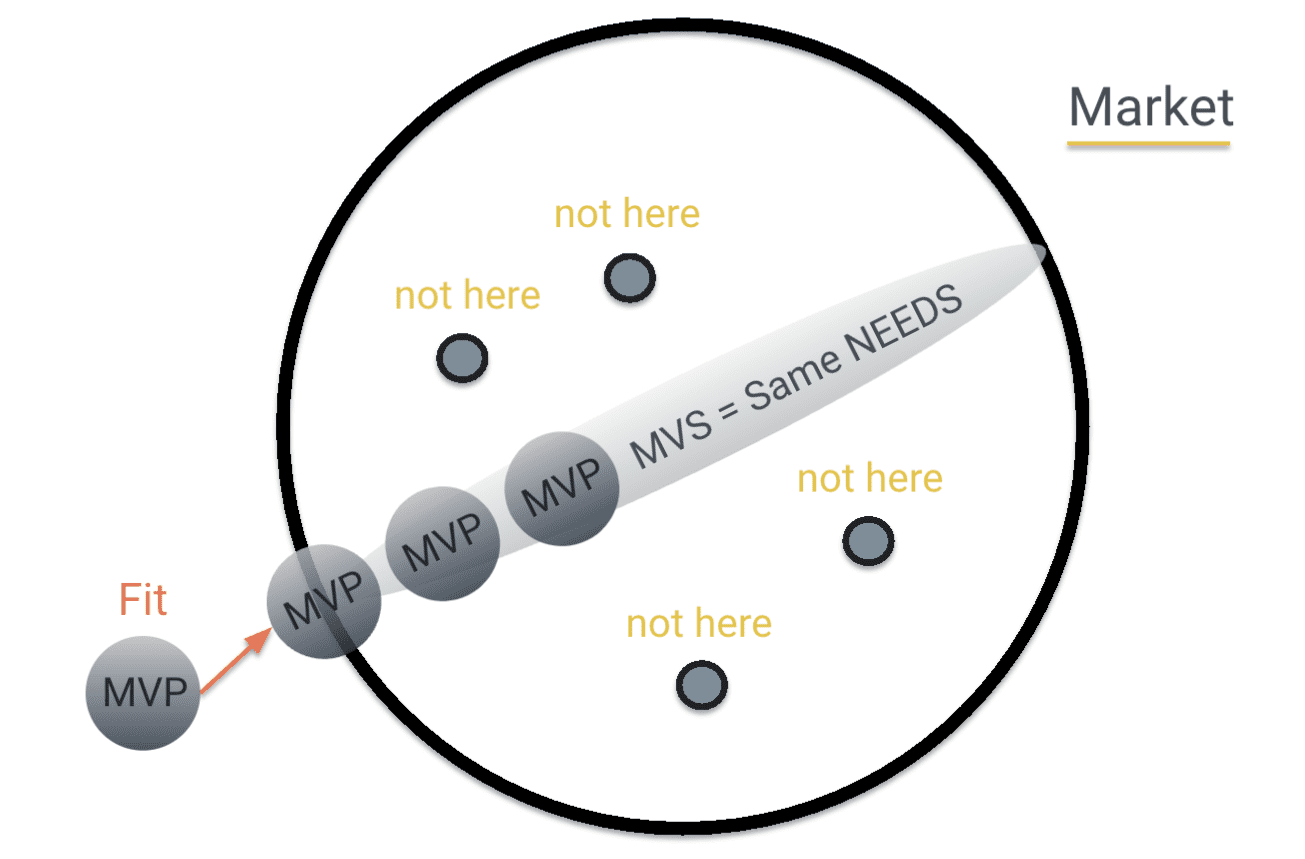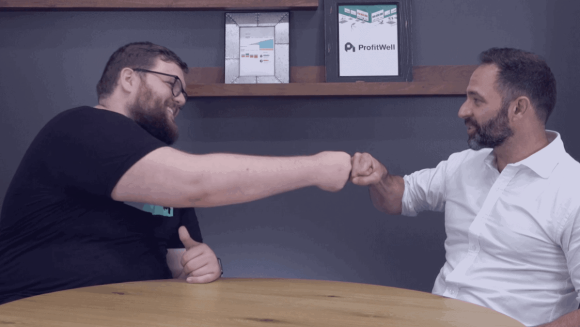“How do you find product-market fit?” It’s a question we hear a lot, and founders focus an incredible amount of time and energy on it—for good reason! That’s what gets you the early traction needed to build a business.
But too many entrepreneurs (especially those who follow the Lean Startup methodology) become too focused on the “product” part of product-market fit. They become consumed with their Minimum Viable Product (MVP) and forget about the “market” part. So while the MVP is critical, it’s missing its partner in crime: the Minimum Viable Segment (MVS).
What is a Minimum Viable Segment?
Minimum Viable Segment is about focusing on a market segment of potential customers with the same needs to which you can align. Defining and focusing on your MVS is vital because, without it, potential users who have divergent needs will quickly pull your MVP in many different directions.

This, in turn, will bloat—not minimize—your product requirements and drain your limited startup resources. And you won’t just feel that drain in product development. It’ll come back to haunt you in any go-to-market (GTM) activities and then again in customer service and support, potentially paralyzing your business model.
Here are two examples.
- Securing strong reference customers. Strong references are critical in the early days of your GTM activities. But they can’t reference each other if they don’t have the same needs.
- Customizing customer support. When it comes time to service and support customers, if you’ve built different solutions to different needs, they aren’t likely to have the same service and support problems. As a result, they’ll stretch your services teams.
If customers did have the same needs and solutions, 1) they would be relevant references, and 2) they might even support each other in a customer community. That could save you a lot of time and money.
What can you do about this? Focus.
Find the Same, Similar, or Very Closely Related Needs
Focus on finding a set of customers who have the same or as similar a need, pain, or problem as possible to those of the other customers in your MVS.

To be explicit about this, it is the same needs you are looking to fulfill—not features you want to build. What’s the difference? For starters, customers don’t think in terms of features. They think in terms of pain and need. And while a feature might address their initial need, it’s not likely to stay on course with their needs as they evolve if they’re different from other customers. And as you’ll see below, it also becomes important beyond your product alone.
Is MVS another way of saying “Vertical Market?”
Your MVS might be a vertical, or it could be partly defined within a vertical, but that isn’t the only way to define and focus on your MVS.
For example, if you pick a vertical like Financial Services, that’s too broad to be an MVS. You’d want to break it down into Banking, Brokerage, Insurance, etc. Then keep breaking it down further until you’ve found a set of potential customers with the same need. For example, take the need for regulatory compliance.
Then try to drill deeper into that need to find the pain. Is it the compliance itself or the reporting? What specific regulation is it? PCI or Basel II?
These will all have different needs.
If you take the PCI compliance path, it actually applies outside Financial Services—in eCommerce, for example. That’s the starting point to think about needs that cross verticals.
Your segment does not need to be constrained to a vertical at all. In this case, it could ultimately be anywhere where PCI compliance is needed.
Minimum = Small Enough to Dominate
The minimum part of the MVS is about keeping your segment as small as possible to dominate it. Once you dominate it, you can claim leadership. Even if this leadership is just in your MVS, it’s valuable to your positioning and referenceability for the next segment you want to go after.
So in our PCI example, you might choose to limit it to one vertical and just do PCI compliance for eCommerce, if all those customers have the same need.
Viable = Where You Can Succeed With Your MVP
As you think about your MVP, look at which segment will have the least product requirements. Again, going back to our example, is that PCI compliance for Financial Services or eCommerce?
Let’s say you decide eCommerce applications are a better bet because the requirements are less stringent—and you have some related domain expertise on your team. Focusing on eCommerce could make it more likely for you to succeed.
Iterate Your MVS, Just Like Your MVP
Think about interviewing customers to refine the PCI compliance for eCommerce MVS. Could all customers have the same requirement? Say you find out that both software providers and merchants have needs for their eCommerce solutions. Which should you focus on?
As you iterate, you may find you’re better suited to serving the software providers and gaining leverage as part of their solution rather than selling directly to merchants. Or you may need to drill further and figure out if there’s a certain size or type of eCommerce software provider that has the same needs. Refine and refocus your MVS accordingly.
What Else Comes Into Play?
There can be many factors to help you with your MVS. Start by asking:
- How tightly knit are the customers in your segment?
- Do they talk to each other in (for example) community forums or trade associations? The closer they are, the more likely they are to reference each other efficiently. Think of this as the beginning of your viral loop.
- Through which channels can you reach your MVS?
- Following the point above, if your MVS can be reached via the same channel, that can help you focus your marketing.
- Where does my MVS live/work?
- If your MVS is in a close geographical area, you can easily reach them—a critical attribute in a high-touch-oriented solution.
Thinking Ahead to Expansion
Once you’ve dominated an MVS and are ready to expand, it can help pick adjacent segments that closely align with each other and have similar attributes. That way, you can leverage work from one MVS to the next.
In summary, Minimum Viable Segment is such an obvious concept once you see it in practice. However, so many entrepreneurs lose sight of it—focusing too much on product, rather than zooming out to see who they’re building their product for. Others simply can’t resist the temptation to take money from any customer, believing they’ll succeed regardless.
Yet, with some simple work to define an MVS, you can focus on the right product issues to address—e.g., those that will target the common needs of your MVS customers. And you’ll build a much more profitable GTM and business model.
So focus, find your MVS, and start refining!
Case Study: Demandware
In this case example, Jamus Driscoll, then SVP of Marketing at Demandware, shares how critical it was to segment in great detail to find their initial customers.










